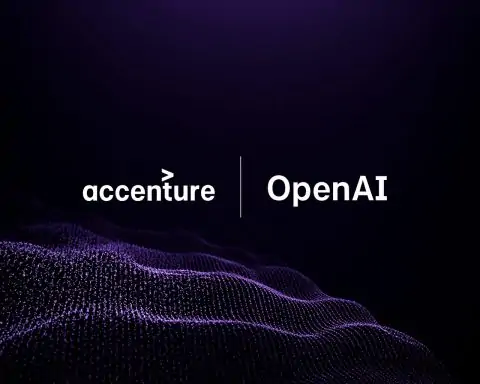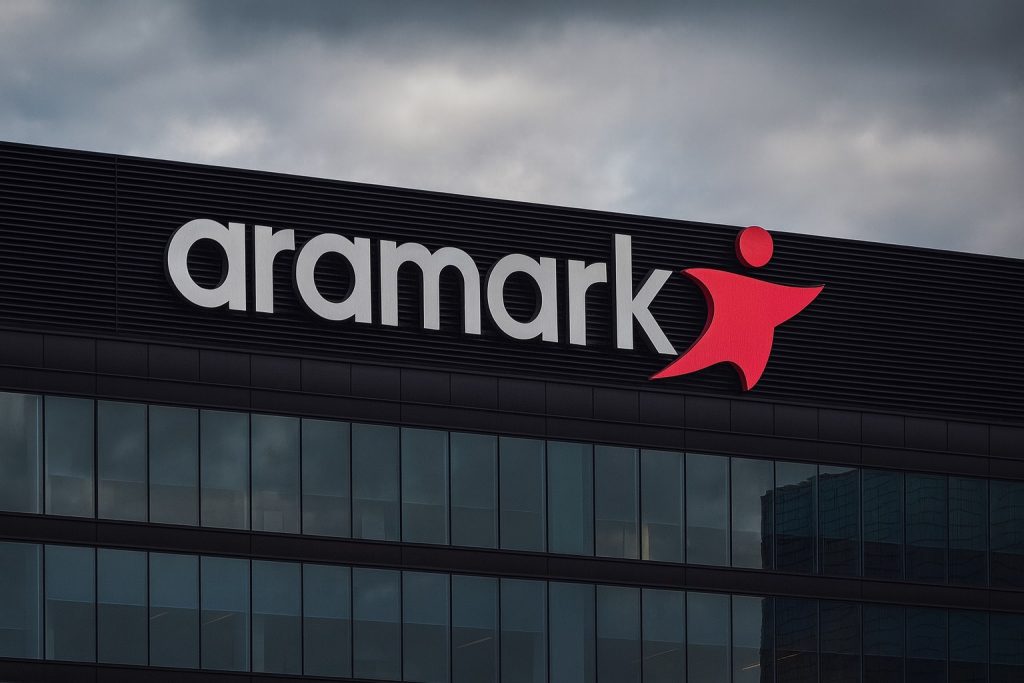Clean‑energy developer and IPP PowerBank Corporation (NASDAQ: SUUN, Cboe CA: SUNN) swings back to profit as it leans into solar, storage and AI‑driven project planning.
PowerBank Corporation, the Canadian‑based solar and battery storage developer formerly known as SolarBank, reported a profitable first quarter of fiscal 2026 today and unveiled a fresh milestone in its AI partnership with Intellistake Technologies, sending the thinly traded renewable‑energy stock back into the spotlight. [1]
Q1 2026: PowerBank posts first quarterly profit since major write‑downs
In a designated earnings release covering the three months ended 30 September 2025, PowerBank said it: [2]
- Generated revenue of CAD 19.15 million, up from CAD 15.06 million a year earlier.
- Delivered gross profit of CAD 8.54 million, roughly 106% higher year‑on‑year, with gross margin expanding to about 44.6% from 27.5%.
- Reported adjusted EBITDA of CAD 4.84 million, compared with CAD 1.97 million in the prior‑year quarter.
- Returned to the black with net income of CAD 1.01 million, versus a net loss of CAD 26.49 million in the same period of fiscal 2025.
Earnings per share flipped from a loss of CAD 0.87 to a profit of CAD 0.03 (basic), highlighting how far the company has come since it reported a full‑year 2025 net loss of about CAD 31 million, driven largely by one‑time impairment charges. [3]
Management framed the quarter as a validation of PowerBank’s transition from being primarily a project developer to acting increasingly as an independent power producer (IPP) with recurring revenue from owned solar and battery assets. IPP revenue rose to roughly CAD 3.85 million from CAD 3.26 million a year earlier, while new development‑fee revenues also helped lift overall sales. [4]
What drove the turnaround? Geddes, grants and higher‑margin development revenue
PowerBank’s earnings improvement is closely tied to a series of project milestones across the U.S. and Canada, most of which were either completed or advanced in recent months: [5]
- Geddes Solar Project (New York, U.S.) – The company’s 3.79 MW Geddes solar project in New York State, built on a repurposed landfill, is now fully operational. It is expected to provide enough clean energy to power roughly 450 homes annually.
- The Geddes project has already secured a USD 1.47 million commercial operation payment from the NYSERDA NY‑Sun Program and is expected to receive an additional USD 245,000 through the Inclusive Community Solar Adder. [6]
- Development fee revenue – PowerBank reported about CAD 3.37 million in development fee revenue this quarter, compared with none in the prior‑year quarter, reflecting its strategy of monetizing parts of its large development pipeline while retaining select projects on its own balance sheet. [7]
Beyond Geddes, the company continues to build out its U.S. footprint in New York State: [8]
- It has signed lease and power purchase agreements with the New York State Division of Military and Naval Affairs (DMNA) for a 20 MW DC portfolio of ground‑mount, rooftop and parking‑canopy solar plus BESS assets on military facilities across the state.
- PowerBank is advancing a 6.9 MW DC ground‑mount project (NY‑Crawford Rd) in New York’s Capital District and a 5.7 MW North Main St project that has completed a key interconnection review step.
In Canada, the company highlighted progress on community solar and storage projects: [9]
- Three Nova Scotia community solar projects (Sydney, Brooklyn and Petpeswick) secured CAD 1.74 million in funding via provincial and Net Zero Atlantic programs.
- In Ontario, PowerBank has begun installing a 4.99 MW battery energy storage system (BESS) in Cramahe at its SFF‑06 project, following earlier news this year on its first BESS installation in the province. [10]
These assets feed into a development pipeline of more than 1 GW of solar and storage projects across North America, with more than 100 MW already built under the company’s watch. [11]
Balance sheet and RE Royalties deal: more breathing room, but risks remain
Despite the return to profit, PowerBank is still managing a leveraged balance sheet. At the end of the quarter, the company reported: [12]
- Current assets of about CAD 35.5 million, including roughly CAD 9 million in cash, restricted cash and short‑term investments.
- Current liabilities of about CAD 36.4 million, down from CAD 43.1 million at the June 30 fiscal year‑end, largely due to lower unearned revenue and current debt.
Crucially, the company today disclosed that RE Royalties has agreed to extend the maturity of an existing project financing loan to 26 November 2026, at an interest rate of 12% per annum. The associated royalty rate on certain BESS projects will be 0.80%, falling to 0.65% if the loan is repaid by 26 May 2026. [13]
Independent analysis sites such as GuruFocus still flag high debt‑to‑equity levels, weak liquidity ratios and a low Altman Z‑Score, all of which underline continued balance‑sheet risk even as profitability improves. [14]
AI meets renewables: Intellistake deploys IntelliScope hub to PowerBank
The second major headline tied to PowerBank today comes from its technology partner Intellistake Technologies Corp.
In a separate announcement, Intellistake said it has delivered the first operational IntelliScope Enterprise AI Agent Hub to PowerBank for closed internal beta testing, marking a key development milestone in its AI roadmap. [15]
According to Intellistake, the initial IntelliScope deployment at PowerBank: [16]
- Integrates modular AI agents into PowerBank’s workflow to analyze site viability for new renewable energy projects in the United States.
- Assesses federal and state grant opportunities, regulatory conditions and local sentiment to help identify attractive locations and incentive structures.
- Is designed to create data‑rich intelligence summaries for business development and financing decisions.
PowerBank CEO Dr. Richard Lu described the collaboration as a way to make project evaluation faster and more transparent, potentially helping the company prioritize projects and navigate fast‑changing tax‑credit regimes in the U.S. renewable‑energy market. [17]
The AI rollout builds on an earlier announcement in September 2025 that PowerBank had become an enterprise beta partner for IntelliScope and underscores management’s ambition to combine infrastructure development with advanced analytics. [18]
SUUN stock reaction: modest gains amid volatile trading
PowerBank shares trade on NASDAQ under the ticker SUUN and on the Canadian market under SUNN. [19]
By Monday afternoon, SUUN was changing hands around USD 1.80–1.85, up several percentage points on the day, after a sharp pullback over the past month. Data from TradingView shows: [20]
- A current price near USD 1.81, up about 3–4% in the past 24 hours.
- A decline of roughly 25% over the past month and about 36% over the past year.
- A market capitalization in the USD 59 million range.
- EPS of USD 0.01 in the latest reported quarter, beating earlier expectations that had called for a loss.
The share price remains far below its 2023 highs above USD 8, reflecting both dilution and investor caution after a loss‑making fiscal 2025. [21]
How analysts and screeners currently view PowerBank
Analyst coverage is still thin, but where it exists, sentiment is cautiously constructive:
- StockAnalysis reports an average “Strong Buy” rating from two analysts and a 12‑month price target of USD 5.00, implying substantial upside from current levels if execution continues. [22]
- Third‑party quant screens, including GuruFocus, simultaneously highlight elevated volatility, significant leverage and weak profitability history, placing PowerBank in a higher‑risk category relative to more established utilities. [23]
These contrasting signals mirror the company’s profile: a small‑cap renewables developer with a large pipeline and improving fundamentals but a balance sheet and market environment that still demand caution.
From SolarBank to PowerBank: a quick look at the rebrand and strategy
Investors encountering the name for the first time may remember the company as SolarBank Corporation. In July 2025, the firm completed a name change to PowerBank Corporation, keeping its SUUN ticker but adopting branding aimed at reflecting a broader focus on powering the digital economy with solar and battery infrastructure. [24]
In October 2025, PowerBank’s fiscal‑year results showed: [25]
- Total revenue of about CAD 41.5 million, down nearly 29% year‑on‑year.
- A net loss of approximately CAD 31.1 million, largely due to a CAD 30.4 million impairment.
- A 1,500%+ increase in IPP revenue, underscoring the shift toward owning and operating assets rather than just building them for others.
The newly released Q1 2026 numbers suggest that the worst of those one‑off charges may be behind the company, but they also underline how pivotal the next few quarters will be in proving that profitability is sustainable.
Key risks and what to watch next
Even with today’s positive headlines, several factors will likely shape how SUUN trades over the coming months: [26]
- Execution on pipeline and financing
- PowerBank’s growth strategy depends heavily on securing third‑party project financing on acceptable terms. Delays in financing, permitting or interconnection could slow the build‑out of its IPP portfolio.
- Policy and incentive uncertainty
- The company’s U.S. projects rely on federal and state incentives, including tax credits and grant programs. Changes to these regimes could affect project economics and demand.
- Leverage and liquidity
- While the RE Royalties extension provides breathing room, leverage remains high and interest expense is significant. Continued cash generation and asset recycling will be critical.
- AI partnership outcomes
- The IntelliScope beta is still in testing. The real benefits for PowerBank will depend on whether the AI platform meaningfully improves project selection, speeds up development and helps secure incentives or capital at scale.
- Upcoming communication
- PowerBank has scheduled a Q1 2026 earnings call for later today at 4:30 p.m. ET, where management is expected to provide more color on the quarter, capital plans and its development pipeline. [27]
For now, 17 November 2025 marks an important inflection point: PowerBank has moved from a year of heavy losses to a profitable quarter, broadened its project base in key North American markets and taken a visible step into AI‑assisted project development. Whether that momentum translates into lasting shareholder value will depend on execution in the quarters ahead.
References
1. powerbankcorp.com, 2. powerbankcorp.com, 3. stockanalysis.com, 4. powerbankcorp.com, 5. powerbankcorp.com, 6. powerbankcorp.com, 7. powerbankcorp.com, 8. powerbankcorp.com, 9. powerbankcorp.com, 10. powerbankcorp.com, 11. powerbankcorp.com, 12. powerbankcorp.com, 13. powerbankcorp.com, 14. www.gurufocus.com, 15. markets.ft.com, 16. markets.ft.com, 17. markets.ft.com, 18. finance.yahoo.com, 19. stockanalysis.com, 20. www.tradingview.com, 21. www.tradingview.com, 22. stockanalysis.com, 23. www.gurufocus.com, 24. powerbankcorp.com, 25. stockanalysis.com, 26. powerbankcorp.com, 27. powerbankcorp.com








